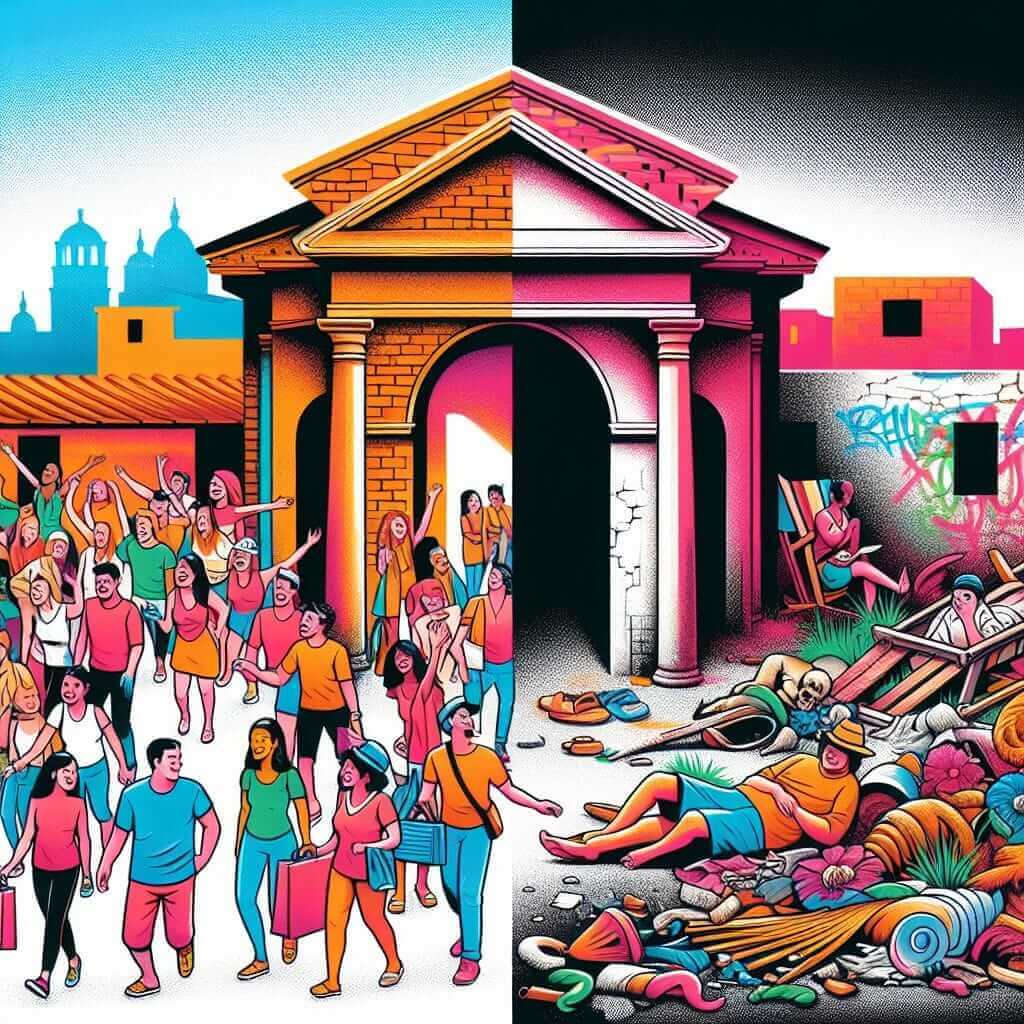The IELTS Reading section is a crucial part of the test that evaluates your ability to comprehend written English. One of the recurring themes in past IELTS Reading exams is “Cultural Heritage and Tourism.” This topic’s relevance spans over years, reflecting its importance in global discussions. Therefore, preparing through such themes can enhance your chances of encountering similar texts in the exam.
In this detailed guide, we will delve into a reading passage on “Cultural Heritage and Tourism,” provide practice questions, answers, explanations, common mistakes, vocabulary, and crucial grammar points. Moreover, we will integrate SEO-friendly keywords such as “cultural heritage,” “tourism,” “cultural heritage sites,” and related terms naturally throughout the content.
IELTS Reading Practice Passage: Cultural Heritage and Tourism
Passage
Cultural Heritage and Tourism
Tourism has increasingly become a fundamental aspect of preserving cultural heritage, offering both opportunities and challenges. Cultural heritage consists of monuments, buildings, artifacts, and other sites significant to history and culture. These elements not only contribute to societal identity but also offer educational and economic benefits.
The surge in cultural tourism has led to increased attention towards preserving cultural heritage sites. Tourists visiting these sites contribute to local economies, enabling reinvestment in conservation projects. Countries like Italy and France have extensively used revenue from tourism to maintain their heritage. However, the influx of visitors also poses risks such as degradation of sites and the commercialization of culture.

A key aspect of cultural heritage preservation via tourism is sustainable development. Sustainable tourism aims to balance the economic benefits with the need to protect cultural integrity and the environment. Techniques such as limiting visitor numbers, promoting off-peak visits, and employing local guides can mitigate harmful effects.
One successful example is the town of Luang Prabang in Laos, a UNESCO World Heritage Site. In the 1990s, it experienced a tourism boom that threatened its cultural sites. The local government implemented sustainable tourism practices and collaborated with international organizations to protect its heritage while benefiting economically from tourism.
In contrast, some regions face difficulties reconciling tourism with cultural heritage preservation. The Great Wall of China and the Pyramids of Giza have suffered from overcrowding and neglect. These cases highlight the need for stricter regulations and better management practices to protect cultural heritage from the adverse effects of mass tourism.
In conclusion, cultural heritage tourism presents a dual role – it can be a boon or a bane depending on how it is managed. Effective strategies and sustainable practices are paramount to ensure that tourism contributes positively to preserving the world’s cultural legacies.
Practice Questions
Question 1 (Matching Headings)
Choose the correct heading for each paragraph from the list of headings below.
List of Headings:
- Positive impacts of cultural tourism
- Risks associated with cultural tourism
- Examples of successful cultural heritage tourism management
- Introduction to cultural heritage and tourism
- Cases of mismanagement in cultural tourism
Paragraphs:
- Paragraph 1
- Paragraph 2
- Paragraph 3
- Paragraph 4
- Paragraph 5
- Paragraph 6
Question 2 (Multiple Choice)
1. What need to be balanced in sustainable tourism?
a. Economic benefits and cultural modernity
b. Economic growth and environmental concerns
c. Economic benefits and cultural integrity
d. Visitor numbers and economic reinvestment
2. Which of these countries is mentioned as having used tourism revenue for heritage preservation?
a. China
b. Laos
c. Italy
d. Egypt
Question 3 (True/False/Not Given)
1. Tourism has no significant effect on preserving cultural heritage sites.
2. Overcrowding is a severe issue at the Great Wall of China.
3. Local guides are not part of sustainable tourism practices.
Answers and Explanations
Matching Headings
- Paragraph 1 – 4. Introduction to cultural heritage and tourism
- Paragraph 2 – 1. Positive impacts of cultural tourism
- Paragraph 3 – 2. Risks associated with cultural tourism
- Paragraph 4 – 3. Examples of successful cultural heritage tourism management
- Paragraph 5 – 5. Cases of mismanagement in cultural tourism
- Paragraph 6 – Conclusion
Multiple Choice
- c. Economic benefits and cultural integrity
- c. Italy
True/False/Not Given
- False – Tourism significantly impacts the preservation of cultural heritage sites.
- True – Overcrowding is mentioned as a significant issue.
- False – Local guides are indeed part of sustainable tourism practices.
Common Mistakes
Some typical errors candidates might make when dealing with this type of reading passage include:
- Misunderstanding Vocabulary: Terms like “sustainable tourism” and “cultural integrity” may confuse students. It’s crucial to understand the context.
- Matching Headings Mistakes: Overlooking the main idea of paragraphs can lead to incorrect headings. Skim for keywords and main ideas.
- True/False/Not Given Issues: Misinterpreting statements based on partial information rather than the whole context.
Vocabulary
Difficult Words:
- Artifacts (noun) /ˈɑːr.tɪ.fækt/ – Objects made by humans, typically of cultural or historical interest.
- Degradation (noun) /ˌdɛɡrəˈdeɪʃən/ – The process by which something deteriorates or is damaged.
- Sustainable (adjective) /səˈsteɪ.nə.bəl/ – Capable of being maintained over the long term without harming the environment or cultural aspects.
- Reconcile (verb) /ˈrek.ən.saɪl/ – To find a way of making two different ideas, facts, etc. exist or be true at the same time.
Grammar Focus
Phrasal Verbs with ‘Look’
- Look after – To take care of someone or something.
- Example: The local authorities look after the cultural heritage sites.
- Look into – To investigate.
- Example: They look into different ways to promote sustainable tourism.
Tips for a High Reading Score
- Practice Regularly: Consistent practice with different text types and complexities.
- Build Vocabulary: Enrich your word bank with IELTS-specific vocabulary.
- Develop Skimming and Scanning Skills: Quickly identify main ideas and specific details.
- Take Practice Tests: Simulate real exam conditions regularly.
By focusing on these aspects and integrating advanced strategies, you can enhance your performance in the IELTS Reading section effectively.